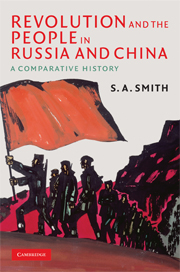Book contents
- Frontmatter
- Contents
- Acknowledgments
- Introduction: Capitalist Modernity and Communist Revolution
- 1 Memories of Home: Native-place Identity in the City
- 2 The Awakening Self: Individuality and Class Consciousness
- 3 After Patriarchy: Gender Identities in the City
- 4 Saving the Nation: National and Class Identities in the City
- 5 Workers and Communist Revolution
- Index
- References
Introduction: Capitalist Modernity and Communist Revolution
Published online by Cambridge University Press: 05 June 2012
- Frontmatter
- Contents
- Acknowledgments
- Introduction: Capitalist Modernity and Communist Revolution
- 1 Memories of Home: Native-place Identity in the City
- 2 The Awakening Self: Individuality and Class Consciousness
- 3 After Patriarchy: Gender Identities in the City
- 4 Saving the Nation: National and Class Identities in the City
- 5 Workers and Communist Revolution
- Index
- References
Summary
This book is an exploration of how the social identities of peasants who left their villages to work and settle in St Petersburg, from the 1880s to 1917, and in Shanghai, from the 1900s to the 1940s, were transformed under the impact of capitalist modernity. St Petersburg and Shanghai stood out as the exemplars of capitalist modernity in Russia and China, respectively, two societies that were very different in cultural terms yet which shared the condition of being overwhelmingly agrarian and politically enfeebled. The book explores how the experience of wage labour and city life challenged migrants' understandings of themselves, and asks how changes in their social identities contributed to the political, social and cultural ferment that eventuated in revolution. It is an attempt to explore the formation of a working class from a new angle, by focusing on transformations of social identity that did not relate directly to the growth of class consciousness or to the growth of revolutionary political sentiment, the aspects of class formation on which the historiography to date has tended to concentrate. Its central thesis is that the identities of peasants who became workers were transformed by a number of processes other than those directly related to wage labour and capitalist production and along a number of axes other than that of class, and that capitalist modernity provides a better optic than capitalist production through which to analyse identity formation.
- Type
- Chapter
- Information
- Revolution and the People in Russia and ChinaA Comparative History, pp. 1 - 36Publisher: Cambridge University PressPrint publication year: 2008



